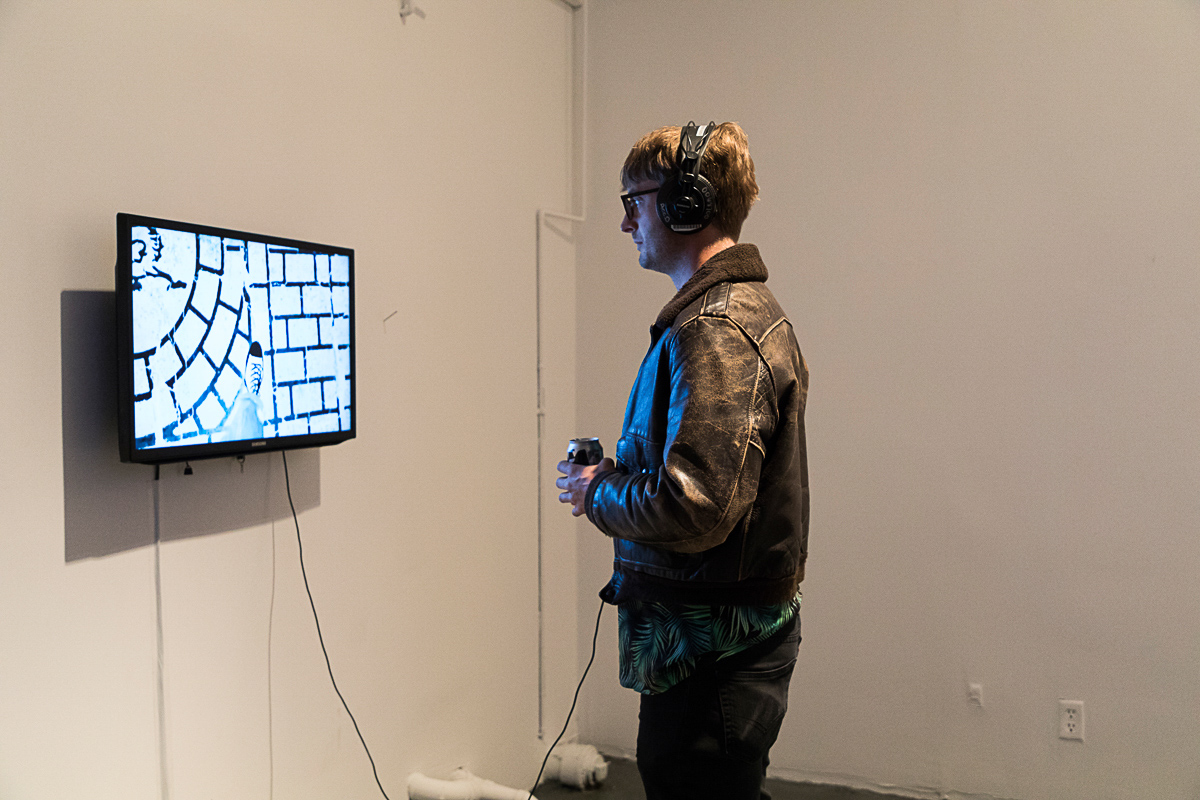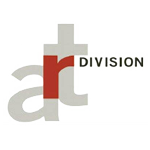Socially Engaged Art
- Social Justice
- Sustainable Development
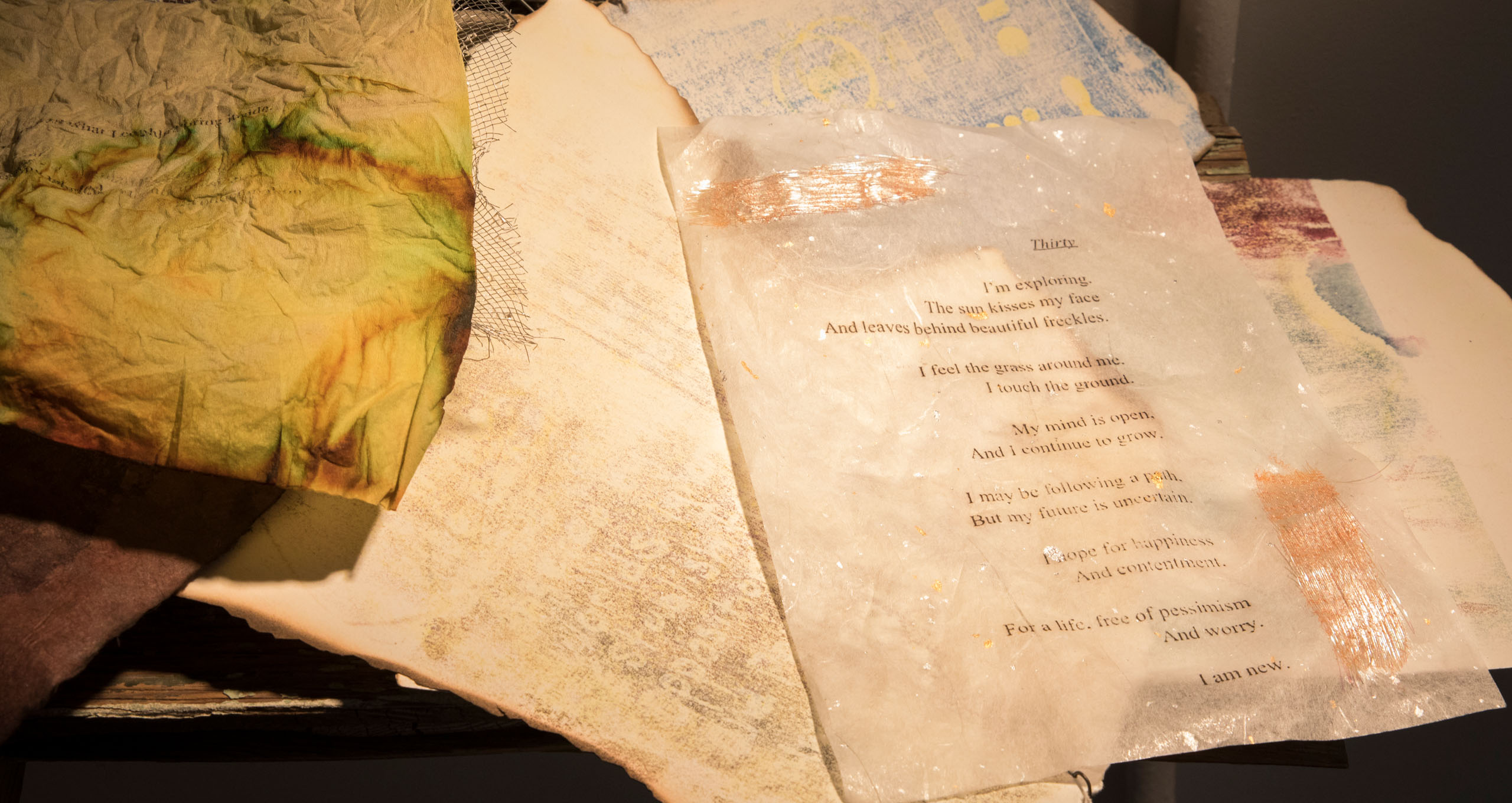
Spring 2018
Sponsored by the Mary Pickford Foundation, this Designmatters studio teamed ArtCenter Fine Art students with artists from Art Division, a non-profit organization located in the Westlake neighborhood of Los Angeles that serves young artists committed to pursuing and studying the visual arts. As a field that blurs the lines between art and life, the Spring 2018 studio, Socially Engaged Art, emphasized participation, dialogue, and action from a place of shared concerns. The class was formatted to encourage collaboration to foster skills of negotiation, while holding space for individual voices and unexpected innovation within art production. Employing the empowering practice of socially engaged art, student teams created collaborative works that explored social issues and presented their work in a public exhibition entitled “DESC | LISADO: Descentralizado, Desentralisado, Decentralized,” mounted on ArtCenter’s campus and at a Chinatown gallery.
Project Brief
Building on a previous studio in which ArtCenter students explored socially engaged art through collaborating with developmentally disabled artists, this Designmatters studio focused on connecting ArtCenter students to the underserved young artists of Los Angeles who participate in after-school programs at the nonprofit Art Division in MacArthur Park. Students from ArtCenter teamed up with Art Division students for dialogue, collaboration and action as they explored contemporary issues such as gentrification, isolation, immigration, displacement, LGBTQ and race. Student teams presented two exhibitions – one at ArtCenter’s South Campus and the other at the Mei Ling Gallery in Chinatown – which showcased a wide range of projects such as an art installation, public performance, short films and a zine compilation.
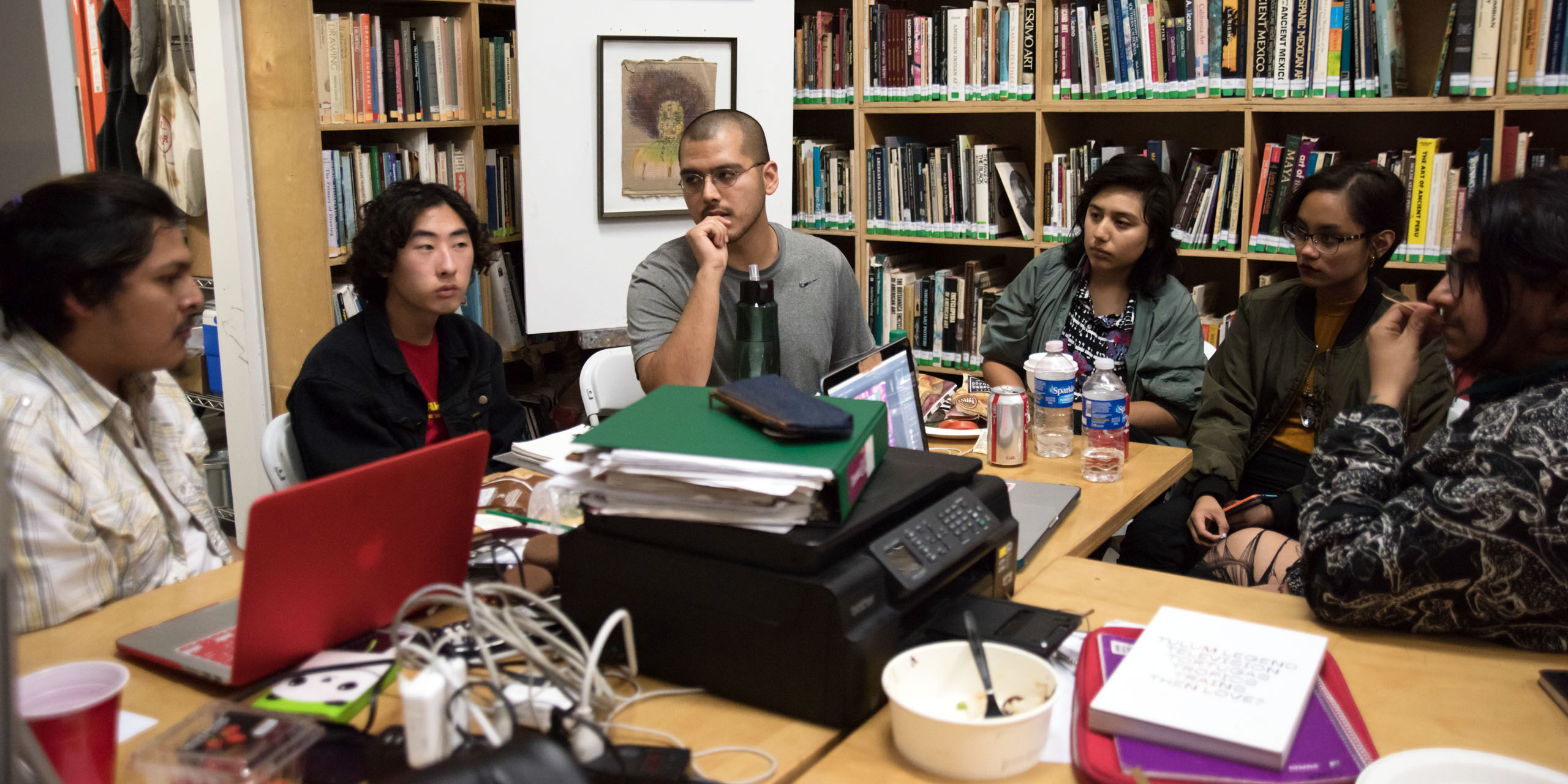
“I knew from the beginning, I wanted to create a space where people could feel vulnerable. The more my teammate and I talked, I realized here is an opportunity for me to tell my own story that I have been keeping secret and maybe in doing so, I give permission for others to relate and tell their own stories they have kept hidden for so long.”
– Johnny Perez, Student, Fine Art
Background – Art Division
Located in the densely populated Westlake area of Los Angeles, Art Division is a non-profit organization devoted to training and supporting underserved young artists who are committed to studying the visual arts. Founded in 2010 by Dan McCleary, the organization focuses on supporting high school graduates who do not have access to school and/or community-based programs to continue their art education. Art Division offers professional training for students 18 to 26 with individualized tutoring, instruction and personal support to help them achieve self-sufficiency, transition to four-year colleges and/or obtain careers in the arts and related fields.
The art library with 8,000 books and resources is the heart of Art Division where classes and lectures are typically held; it is a safe place for study, research and inspiration. The campus also features studios for painting, drawing and print-making. Professional artists and dedicated volunteers donate their time and talent as guest lecturers and often invite students to tour their working studios.

“I wanted an unpacking of L.A. I knew some students who grew up here in L.A. were very interested in the socieo-political dynamics of displacement, gentrification and identity within geography. We consistently talked about gentrification, read lots of articles on issues of representation, and how the media can alter and manipulate on issues of identity.”
– Olga Koumoundouros, Faculty, Fine Art
Research and Project Development
Before meeting with their Art Division counterparts, ArtCenter students learned about the history as well as the culture and community of the McArthur Park neighborhood. They prepared questions and field research topics to consider upon that initial visit.
The two student groups met for the first time at Art Division’s Art Library and after introductions spent a work day brainstorming, drawing and photographing ideas along the themes of immigration, displacement, isolation and gentrification. Students discussed issues and concepts that could appeal to them as a possible subject for their collaborative project; teams would later organically form as students delved deeper into the topics and gravitated to those with similar interests.
Throughout the course of the studio, students were exposed to a variety of articles and resources about the targeted social topics that provided additional context and discussion points to assist in their art thinking as well as issues that could be discussed with their fellow collaborators.
Classroom discussions involved the ethnics of collaboration, understanding the artists’ roles in socio/political climates, and discovering other socially engaged art collaborative projects around the world.
Overall, student teams were given a blank slate to create a work of collaborative art that would address an issue and give a voice to those who feel oppressed and forgotten. Art mediums were wide open and students sought to match up ideas to best represent the marriage of that artistic thought and social issue.
As the worked together on their group project, students also wrestled with their own personal stories and often confronted their own biases. Student artists were encouraged to delve into and share their personal experiences with one another, possibly translating individual histories into a work of art that could reflect a universal social truth as it emphasized dialogue and action.
Collaborative teams also were given a financial budget which helped frame the scope and nature of their project. Teams needed to assign funds not only to materials but also to possible outside fabricators, equipment rentals, transportation costs and other fees, a process which gave the students valuable experience in accountability and transparency under the social responsibility umbrella.
As they sketched, designed and discussed their proposed projects, teams also considered the labor and time involved to complete their work and to meet the exhibition deadlines. Students needed to assign duties, research resources, consider the structural integrity of their installation and proper breakdown procedures among other practical considerations. Scheduling and outlining the steps needed to go from start to finish presented the students with the day-to-day realities of how working artists typically operate.
Teams met independently outside of the classroom, but given their location and schedules, students often relied on connecting through social media and online platforms to share ideas to push art thinking and conceptual designs forward – as well as share practical aspects of their projects.
When teams did meet to work in person, they learned how to effectively listen to their teammates, hearing each other’s stories of struggle and challenges, especially in light of the common themes of displacement, immigration and gentrification. Students discovered that the social nature of art collaboration can bridge understanding and thinking as it empowers creator, subject and viewer.
At the midterm presentation, student teams shared their project proposals through sketches, conceptual outlines and broad strokes, also presenting how they planned to address practical issues. Staff from ArtCenter and Art Division offered suggestions and encouragement which propelled the students to refine and add additional elements to their original designs.
From there, the collaborative teams concentrated efforts to not only finish their art projects, but work with fellow classmates on installation issues and duties. Opening exhibitions provided a deadline that kept students on track to bring the entirety to completion in the most effective, affordable and inspirational way.
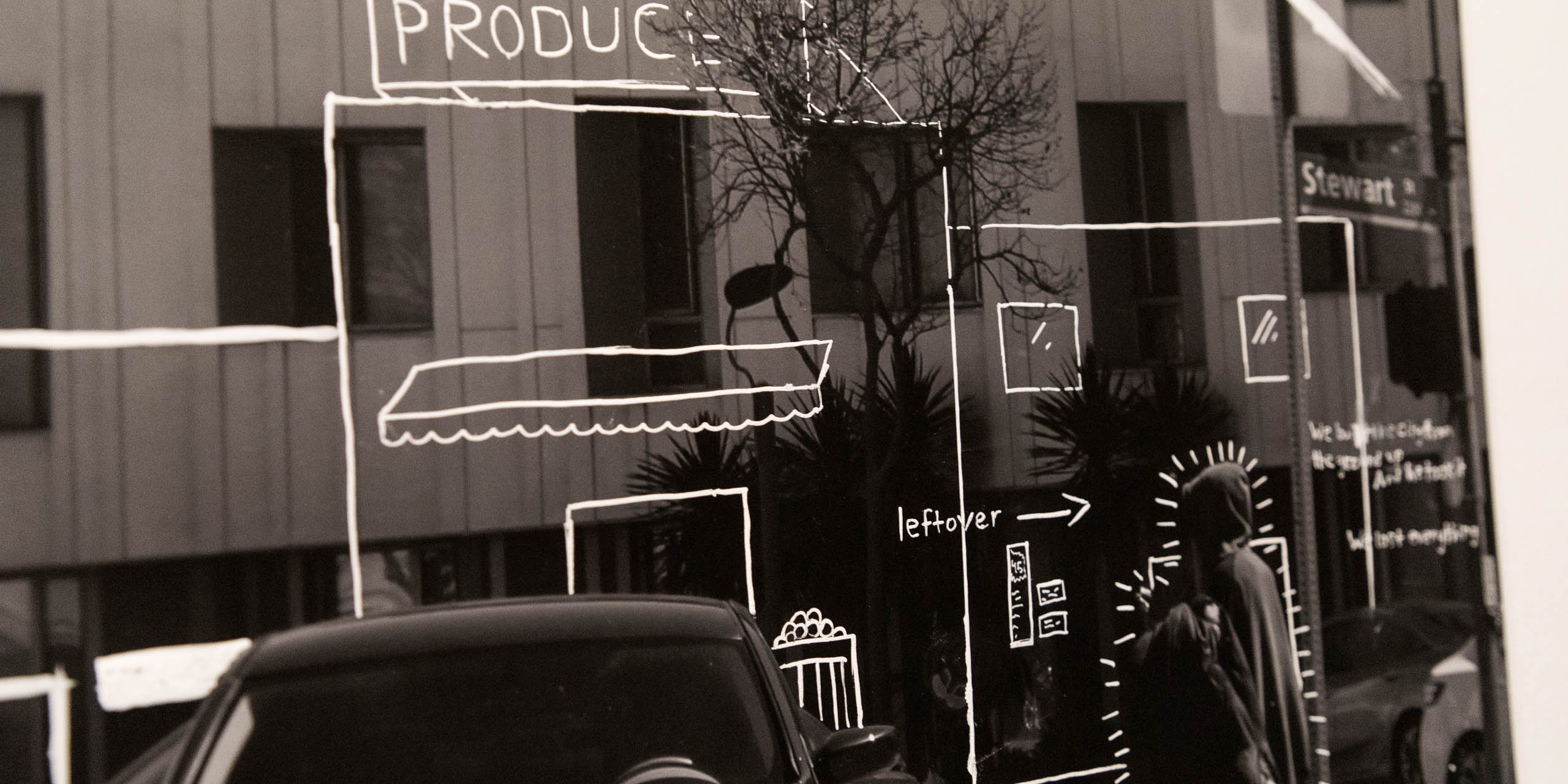
“I’m a photographer and videographer from South Korea who’s been in L.A. about six years. I never saw disparity on the street in South Korea, but since I’ve been here, I’ve gotten numb and desensitized to seeing the homeless. When I shot the documentary for the exhibition, I talked to homeless people and went inside their tents. I saw how they look out on the outer world, what their perspective is like. We don’t often think about that. Seeing the world through their eyes. You can’t be numb after that.”
– Sarah Park, Student, Art Division
Public Exhibition -
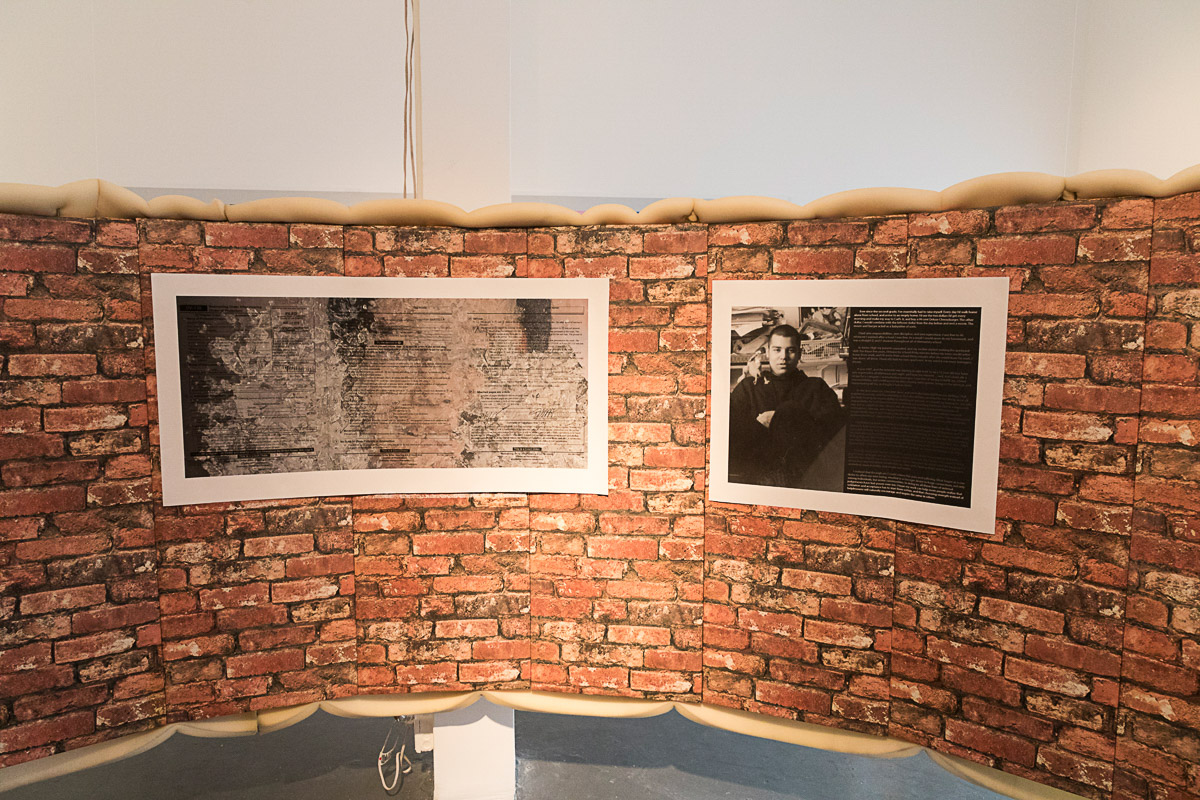 close
close
Heart like Soft Sweet Bread
Read moreAna Leonido, Nancy Matias, Johnny Perez
Inspired by mamon, a type of homemade pastry that is a cultural icon in the Filipino community, this large hanging installation resembles the cheery pink cake from the outside. Upon entering the inside of the cake through a tight door, visitors are in a gallery space that features brick imagery and a place where artists’ secrets and vulnerabilities are shared through photographs, paintings and written words.
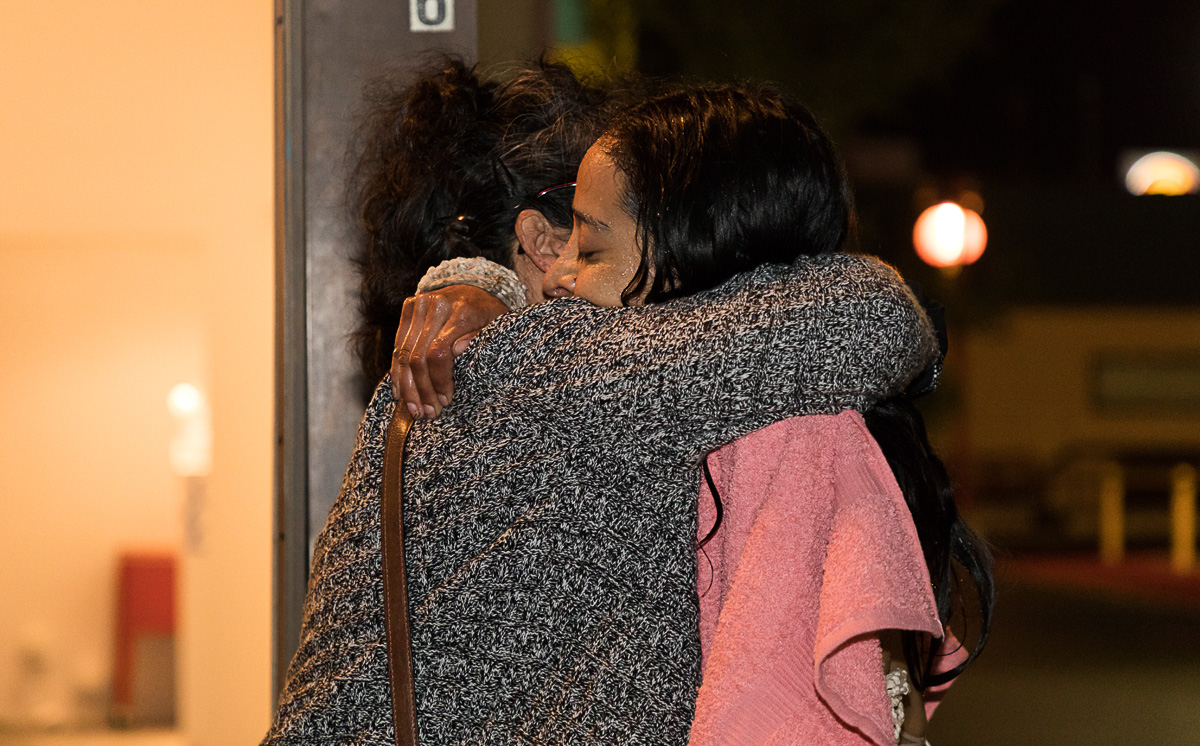 close
close
Huellas que Germinan (Footprints that Germinate)
Read moreJackie Amezquita
As a way to connect and validate the immigrant experience, this performance art follows the artist who, over the course of eight consecutive days, walked more than 140 miles from the border of Tijuana, Mexico and San Ysidro, California to the exhibition space in Chinatown. Upon arrival in Los Angeles, the artist – who is of Guatemalan heritage and wore a jumpsuit woven from Guatemalan cotton – climbs into a trash can taken from Mexico filled with water; such cans often hide murdered bodies. As the artist emerges, she is welcomed by her mother – herself an immigrant – who wraps a towel around her. The trash can is surrounded by clothes from family and friends, a symbol that during her journey the artist was not alone.
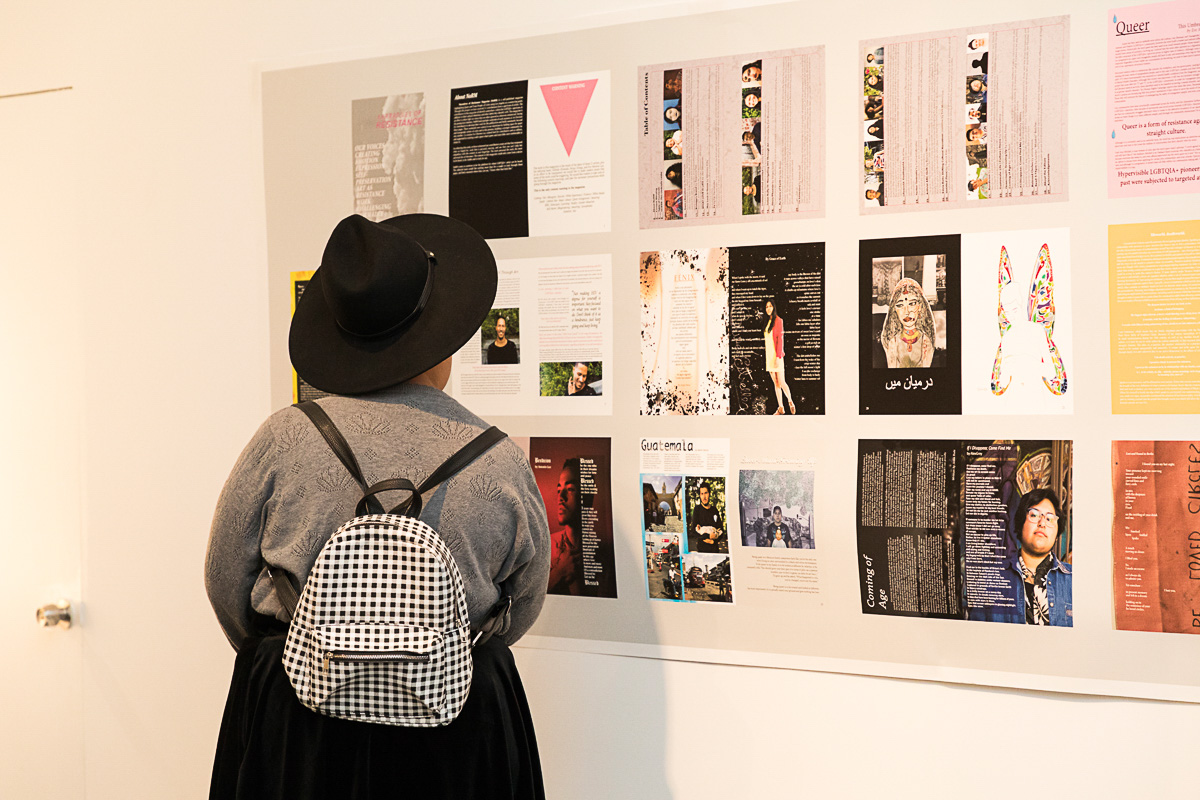 close
close
Narratives of Resistance Magazine (NoRM)
Read moreAlfredo Alvardo, Eve Moreno-Luz, Bryan Ortega
A compilation of artistic images, words, art, photography, poetry and comic-styled pieces, this self-published magazine highlights the work of 21 local queer and trans people of color using Los Angeles as a connection point. Enlarged images from the 40-page zine were mounted on the walls at the exhibition shows.
Through imagery and text, the zine presents a safe place for artists of various mediums to express their thoughts and dreams on self-preservation art as resistance that challenges the concept of normalcy in modern times.
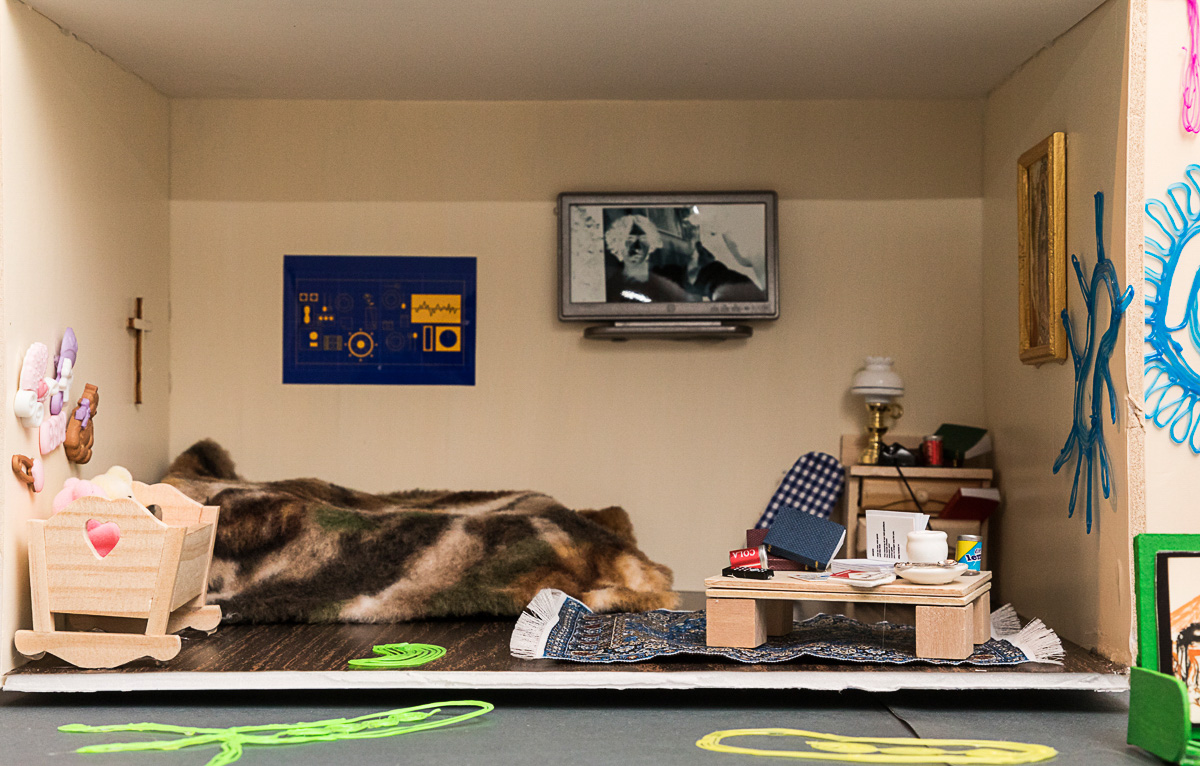 close
close
Out There
Read moreJackie Amezquita, Patrick Kim, John Lee, Sandy Maldonado, Jeremy Saborio, Izabella Sanchez and Sarah Park
This collaborative body of work engages on issues of displacement and features miniature scale models, ink prints, found objects, poetry, photography, mixed media and video presentations. Personal stories, reflections and candid revelations reaffirm the humanity that is often overlooked in today’s fast-moving and ever-changing society.
“You gain so much in collaboration because you have to remove your ego. You work collaboratively. It’s a big integral part of being an artist. Collaboration is the antithesis of competition. You have to make a piece that’s not about you, it’s about the group. These students strived for excellence. They pushed each other. They caught their own mistakes. They learned how to solve issues.”
– Dan McCleary, Founder & Director, Art Division
Next Steps
Following the two mounted exhibitions, the students participated in a live on-air discussion on KCHUNG radio that was moderated by artist Jennifer Moon.
A screening of the finished video documentation of the art installation will take place during summer of 2018 at ArtCenter.
Press
- Jackie Amezquita on Crossing Borders to Create Change, Change Lab Podcast (June, 2018)
- This Artist Walked from Tijuana to L.A. to Make a Powerful Statement, LA Magazine, (April, 2018)
- Art Student Walks From Tijuana to Her L.A. Gallery Show, LA Weekly, (April, 2018)
- Artist Jackie Amezquita Walked From The U.S.-Mexico Border To Los Angeles, GOOD Magazine, (April, 2018)
- ArtCenter Student Walks from Tijuana to Her Art Exhibit in Chinatown, Pasadena Now, (April, 2018)
- From Tijuana to Chinatown: Displacement, ColoradoBoulevard.net, (April, 2018)
- This artist walked 140 miles from the U.S. border to LA to make a statement about displacement, Now This Her, (April, 2018)
“It’s important for artists to understand how to take care of every single aspect of the process. Conceptualizing, finding materials, installing the piece, de-installing the piece, writing down what you want to say, thinking about what you can make with the resources and budget you have. There are lots of steps you have to go to get to this point today. This exhibition is the cherry on the cake. It’s the last step, but everything that happened before it was the most important part.”
– Patricia Yossen, Programming Director, Art Division
